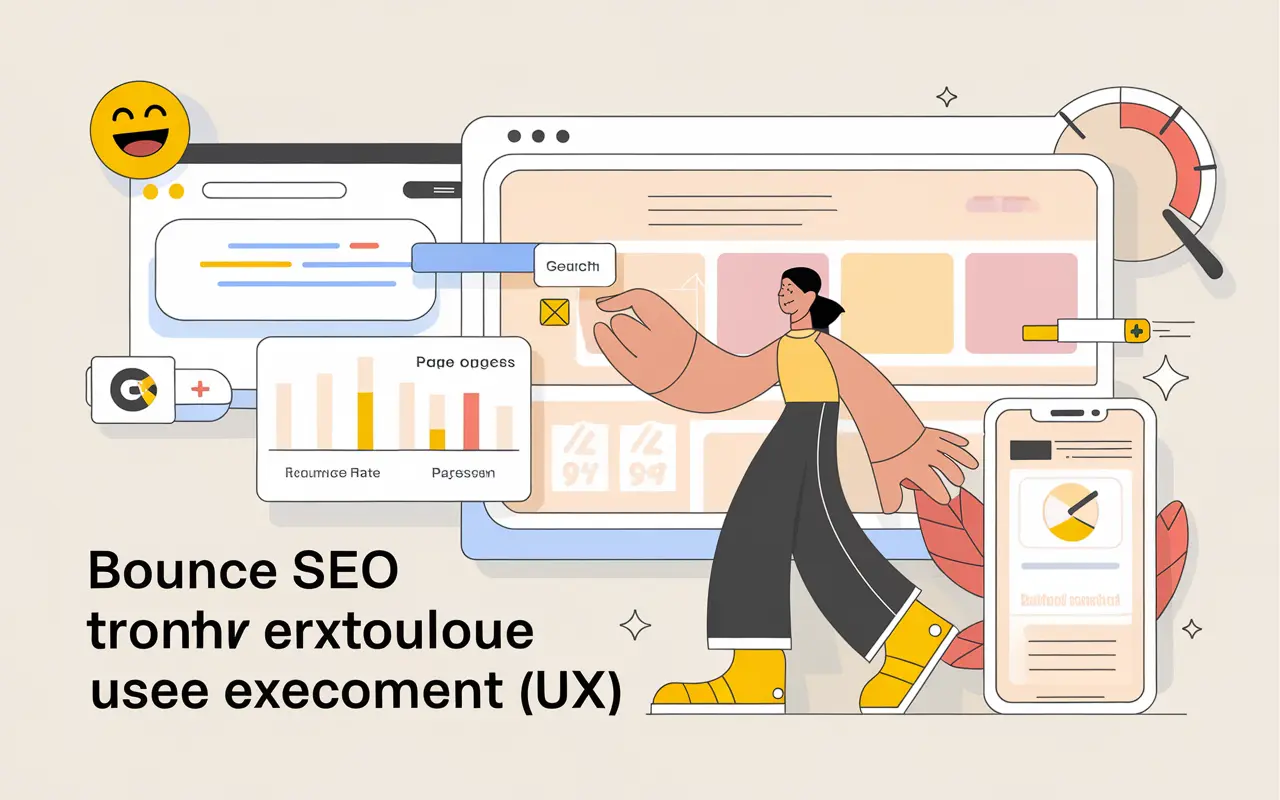Understanding User Experience (UX) and Its Role in SEO
User Experience (UX) refers to the overall experience a user has when interacting with a website or digital product. In the context of SEO, UX plays a foundational role in determining how users engage with a site — affecting dwell time, bounce rate, and ultimately, search engine rankings.
Google has consistently emphasized the importance of offering a seamless and satisfying experience for users. UX focuses on aspects such as website design, navigation, accessibility, content readability, speed, and mobile responsiveness. All these elements contribute directly and indirectly to improving your site’s visibility in search results and driving conversions.
As part of a comprehensive SEO strategy, investing in UX translates to higher engagement, more satisfied users, and stronger authority in your niche, which Google and other search engines reward through improved rankings.
Key Takeaway
Key Takeaway
Optimizing User Experience (UX) enhances SEO by improving engagement metrics, reducing bounce rates, and aligning with search engine ranking factors for long-term website success.
Why Is User Experience (UX) Critical to SEO Success?
Modern SEO is no longer just about keyword stuffing and backlinks. Google’s algorithm updates like Core Web Vitals and the Page Experience update confirm that UX is a priority. According to Google, “great page experience doesn’t override having great, relevant content, but in cases where there is many pages with similar content, page experience becomes more important for visibility in Search.” (Google)
What does this mean for your business? Better user experience equates to:
- Higher User Retention
- Lower Bounce Rate
- More Conversions and Sales
- Improved SEO Performance
Best Practices to Optimize User Experience (UX)
- Mobile-First Design: Since Google indexes mobile-first, ensure your website is optimized for various screen sizes.
- Page Speed Optimization: Use tools like Google PageSpeed Insights and compress media to enhance load speeds.
- Intuitive Navigation: Structure your menus and site architecture so users can find information easily.
- Accessible Design: Use clear fonts, sufficient contrast, and alt text to make your website inclusive to all users.
- Clear Call-to-Actions (CTAs): Use visual hierarchy and logical positioning to guide users to take action.
- Readable Content: Utilize short paragraphs, bullet points, and headings to break down your content.
- Consistent Visual Design: Cohesive design fosters trust and communicates professionalism.
How User Experience (UX) Works in SEO Integration
UX functions as a behind-the-scenes force that heightens the effectiveness of your SEO strategies. Here’s how it integrates:
UX in Technical SEO
Elements like site architecture, schema markup, and mobile responsiveness form the backbone of both good UX and technical SEO. For example, a slow site speed frustrates users and also results in lower rankings as per Core Web Vitals.
UX Influence on On-Page SEO
Content structure — including headings (H1, H2), internal linking, and visual content — directly impacts how users read and stay on a page. This affects metrics like average session time and bounce rate, which are used by search engines as engagement signals.
| UX Element | SEO Impact |
|---|---|
| Mobile Optimization | Higher rankings through mobile-first indexing |
| Page Load Speed | Lower bounce rate, increased dwell time |
| Clear CTAs | Higher conversion rates |
| Accessible Design | Increased traffic from all user groups |
Case Study: Improving UX to Boost Ranking & Conversions
Problem: High Bounce Rate on Mobile Devices
A SaaS service provider experienced a 72% bounce rate from mobile users. Despite great content and strong backlink profiles, rankings weren’t improving.
Solution: A Comprehensive UX Overhaul
The website underwent a full UX redesign focused on a responsive layout, improved CTAs, readable text, and faster load speeds. The navigation was restructured and unnecessary popups were removed.
Results: 39% Bounce Rate Reduction & 53% Organic Traffic Growth
After the improvements, bounce rates dropped to 33%, average session duration increased by 68%, and organic traffic surged by 53% over three months. Conversions jumped from 2.1% to 4.8%.
Common Mistakes to Avoid in UX for SEO
- Ignoring Mobile Optimization: A desktop-only experience leads to poor rankings and user abandonment.
- Slow Loading Speed: Overuse of heavy images or unoptimized code delays page rendering, affecting SEO.
- Weak CTA Placement: If users aren’t sure what to do next, engagement and conversions suffer.
- Overwhelming Pop-Ups: Excessive intrusions cause frustration and lower dwell time.
- Poor Navigation: Confusing paths and menus lead to higher exits and lower crawl efficiency for search engines.
Related SEO Terms to Explore
- Core Web Vitals: A subset of factors Google uses to judge UX quality.
- Technical SEO: Covers the backend improvements that support UX.
- On-Page SEO: Involves elements that affect how users interact with each webpage.
FAQs About User Experience (UX)
Yes, UX affects SEO rankings indirectly through metrics like bounce rate, dwell time, and load speed. Google’s Page Experience update has made UX more impactful in determining rankings.
Good UX improves user engagement, which lowers bounce rates, increases time spent on site, and encourages sharing — all of which contribute to better SEO performance.
You can achieve short-term SEO gains without UX, but for sustainable growth and conversions, UX is essential. Search engines prioritize user satisfaction as a ranking signal.
Examples include slow-loading pages, poor mobile design, confusing navigation, hard-to-read fonts, and intrusive pop-ups. These reduce user satisfaction and SEO ranking.
Conclusion: Elevating SEO with User Experience Optimization
User Experience (UX) is no longer an optional aspect of web design — it is a cornerstone of effective SEO strategy. A well-structured, fast, and user-friendly website not only satisfies visitors but also aligns with Google’s evolving algorithms. Businesses that prioritize UX see improved rankings, increased conversion rates, and long-term digital success. To stay ahead, continuously evaluate your site’s performance and invest in user-centric design. Explore more strategies with our comprehensive SEO services.





